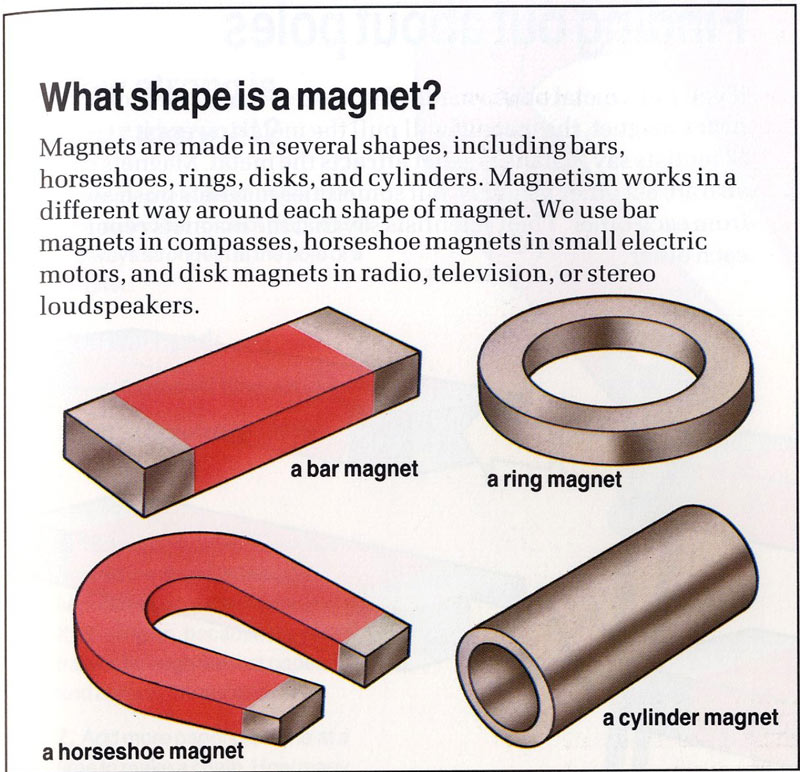
Have you ever wondered about the invisible force that clings a photo to your refrigerator or guides a compass needle to the north? This force originates from the fascinating world of magnetism, a phenomenon governed by three fundamental properties inherent to all magnets. Understanding these properties unlocks the secrets of how magnets work and their impact on our everyday lives, from simple toys to complex medical equipment.
These three inherent characteristics are: magnetic poles (north and south), attraction and repulsion between poles, and the presence of a magnetic field. These seemingly simple properties underpin a wealth of applications, driving innovations in various fields.
The concept of magnetism dates back to ancient Greece, where lodestones, naturally occurring magnets, were observed to attract iron. The term "magnet" likely originates from Magnesia, a region in Greece where lodestones were found. Early civilizations recognized the directional properties of magnets, leading to the invention of the compass, a revolutionary tool for navigation.
The true understanding of magnetic properties, however, blossomed with the work of scientists like William Gilbert in the 16th century. Gilbert's experiments laid the groundwork for modern magnetism, establishing the Earth itself as a giant magnet. Further research revealed the intricate relationship between magnetism and electricity, culminating in the development of electromagnetism by scientists like Hans Christian Ørsted and André-Marie Ampère in the 19th century.
One significant challenge in understanding magnetism is visualizing the invisible magnetic field. Although we can observe the effects of a magnetic field, such as the deflection of a compass needle, the field itself remains unseen. Scientists have developed methods to represent magnetic fields using lines of force, which help us understand their shape and strength. This visualization aids in designing and optimizing magnetic devices.
Every magnet has two poles, designated north and south. Like poles (north-north or south-south) repel each other, while opposite poles (north-south) attract. This simple principle of attraction and repulsion is the foundation of countless magnetic applications.
The magnetic field is the invisible region around a magnet where its influence can be detected. This field is strongest near the poles and weakens with distance. The interaction of magnetic fields is what causes the attraction and repulsion between magnets.
The benefits of understanding these three properties are numerous. For instance, in data storage, the principles of magnetic attraction and repulsion are utilized in hard drives and other storage devices. In medicine, magnetic resonance imaging (MRI) machines rely on the interaction of magnetic fields with the human body to create detailed images for diagnosis. Furthermore, electric motors and generators, crucial components of our modern world, are built upon the interplay of magnetic fields and electric currents.
To further illustrate, consider a simple bar magnet. It possesses a north and a south pole. If you bring the north pole of another magnet close to the north pole of the bar magnet, they will repel. However, if you bring the south pole of the second magnet close to the north pole of the bar magnet, they will attract.
Understanding these fundamental properties is crucial for comprehending the workings of the world around us. From the navigation systems in our cars to the generators that power our homes, the three properties of magnets play a vital role.
Advantages and Disadvantages of Magnet Properties
While magnetic properties offer numerous benefits, some aspects can present challenges:
| Advantages | Disadvantages |
|---|---|
| Enable efficient energy conversion (generators) | Magnetic fields can interfere with sensitive electronics |
| Facilitate data storage (hard drives) | Magnets can lose their strength over time (demagnetization) |
| Enable non-invasive medical imaging (MRI) | Strong magnetic fields can be hazardous to certain individuals (pacemakers) |
Frequently Asked Questions:
1. What is a magnetic pole? A magnetic pole is one of the two ends of a magnet where the magnetic field is strongest.
2. Why do magnets attract some materials and not others? Magnets attract ferromagnetic materials like iron, nickel, and cobalt due to their atomic structure.
3. Can a magnet lose its magnetism? Yes, magnets can be demagnetized by exposure to high temperatures or strong opposing magnetic fields.
4. How does a compass work? A compass uses a magnetized needle that aligns itself with the Earth's magnetic field, indicating direction.
5. What is an electromagnet? An electromagnet is a magnet created by passing an electric current through a coil of wire.
6. What are some everyday uses of magnets? Magnets are used in speakers, headphones, refrigerators, electric motors, and generators.
7. How can you visualize a magnetic field? Magnetic fields can be visualized using lines of force, which represent the direction and strength of the field.
8. How does magnetic strength affect the magnetic field? A stronger magnet will have a larger and more powerful magnetic field.
In conclusion, the three fundamental properties of magnets—magnetic poles, attraction and repulsion, and the magnetic field—are the cornerstones of our understanding of magnetism. These properties have been instrumental in shaping countless technological advancements and continue to drive innovation across various industries. From the simple compass to the complex MRI machine, the applications of these properties are far-reaching and essential to our modern way of life. Continuing to explore and harness these properties will undoubtedly lead to even more groundbreaking discoveries and applications in the future. By understanding these fundamental principles, we can better appreciate the invisible forces that shape our world and continue to unlock the mysteries of magnetism.
Unleash your automotive color vision dupont automotive paint
Decoding the next gen toyota rav4 prime is it worth the hype
Llc business examples decoded



/magnetism-147220256-5b4e02d8c9e77c001acf54e3.jpg)









